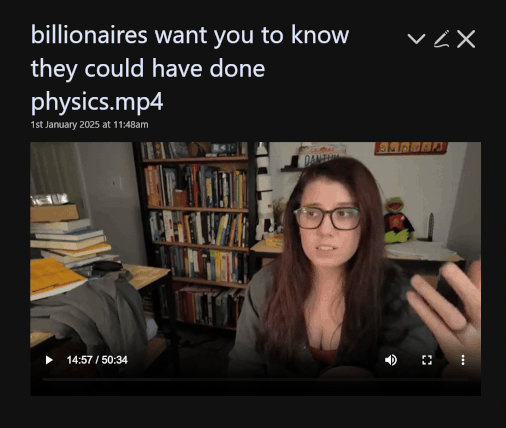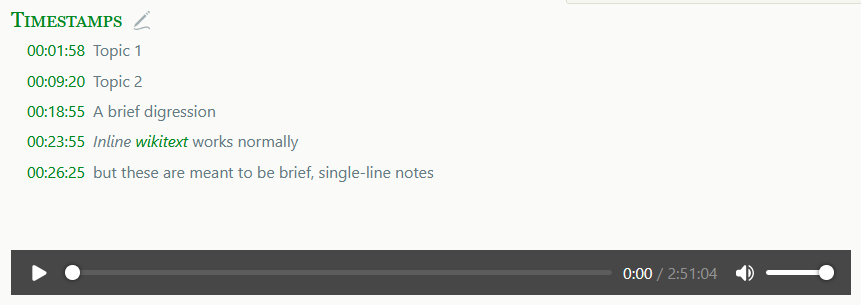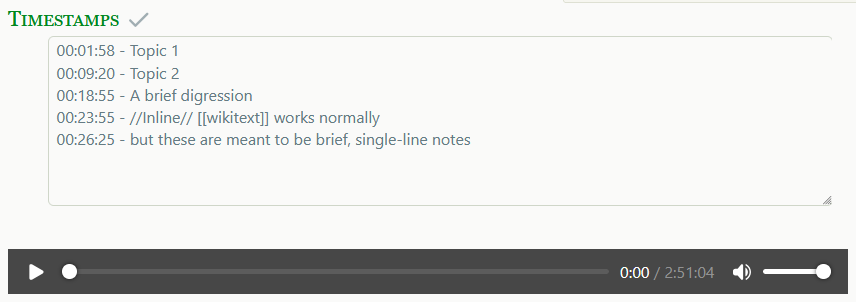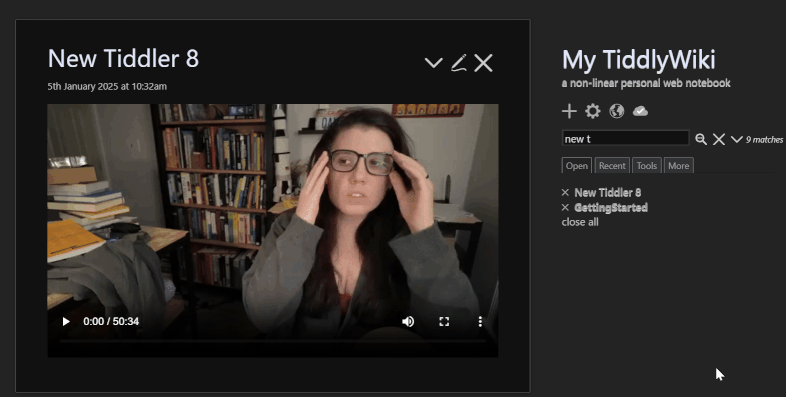Ah, apologies, I have been dividing my time between family (read as, installing a new speaker system) and this project and have not returned to the PR – I’ll return today, I have further updates to the video parser, though I’m not sure if all them are desired as core features or if my implementation would be the preferred one (such as resuming from last-played and storing the timestamps as a field value).
If there is a sufficient desire for them to be core features, I’ll continue working that angle, otherwise I may package as a plugin.
@arunnbabu81 in regard to you annotation tool, I will be very interested in taking more of a look at it when I have a chance.
My idea is to set up a custom streams node for tiddlers tagged as media and have new nodes adopt the timestamp value from their parent: in that case, they could each be transcluded through a viewtemplate that includes a button which changes the value of the parent tiddler to match, and then clicking the button would jump to that time.
The only conceptual problem I have with that is, because the timestamp fields are src-specific, I am unsure how I’m going to write a code that would say “Take whatever field from the parent which has the prefix timestamp” – I’m sure it’s possible, I’ve just never set a field value according to the field prefix of another tiddler.






